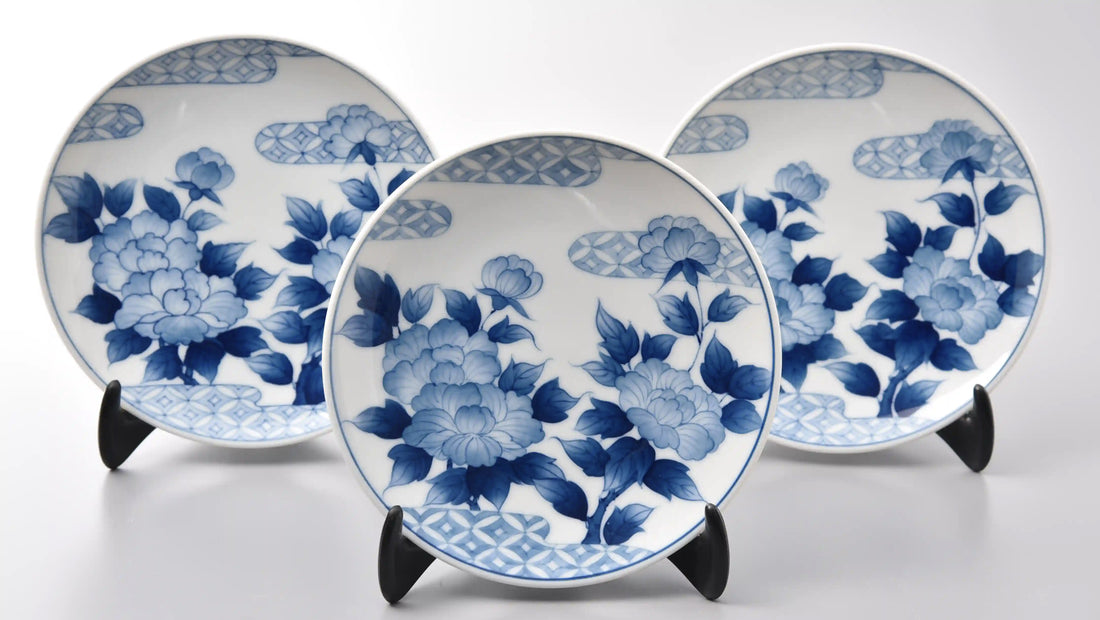
The Timeless Art of Blue-and-White Porcelain Painting
An Interview on Tradition, Technique, and Contemporary Expression
with Yunting Li
Blue-and-white porcelain painting has captured imaginations for over a thousand years, traveling across continents and evolving through cultures. From its origins in early Islamic pottery to its refinement in China’s legendary kilns, this tradition remains one of the most recognizable and celebrated ceramic arts in the world.
We sat down with instructor and artist Yunting Li to explore the history of this technique, how it continues to inspire contemporary artists, and the ways cultural heritage and personal expression come together on porcelain. Whether you’re a beginner or a seasoned ceramicist, this conversation sheds light on both the technical and expressive possibilities of working with cobalt on porcelain.
Learn about our guest workshops
History of the blue-and-white porcelain painting technique
Can you share a little about the history of blue and white porcelain painting techniques?
Yunting Li: The technique roots back to early Islamic pottery in 9th-century Iraq, where artisans used cobalt on tin-glazed ware. China adopted cobalt (imported from Persia) during the Yuan dynasty. The famed David Vases (1351) really displayed the sophistication of the technique by then. Ming and Qing dynasties refined the method and then Jingdezhen became the premier production center, mastering kiln technologies and decorative methods. Doucai, a "more elegant technique" emerged in the Ming court, painting underglaze blue first, then layering colored overglaze enamels. These are all traditional expression we see referenced today.
What elements of this tradition feel timeless, and what aspects are you excited to reinterpret for contemporary artists and students?
Timeless elements:
-
The cobalt-on-white palette remains visually captivating and technically resilient under high-fire.
-
The fluid, rhythmic brushwork echoes traditional ink painting, lending timeless aesthetic consistency.
Contemporary reinterpretation:
-
Artists now blend digital decals, reglaze techniques, or combine expressive modern motifs, expanding beyond classic flora, fauna, and landscapes. As an example, Anderson Ranch workshops integrate conscious and subconscious processes with both underglaze and digital tools. Anderson Ranch Arts Center
-
Exhibitions like “My Blue China” showcase how contemporary artists adapt the tradition from abstract forms to social commentary. Architectural Digest

How do you see porcelain painting as both a technical and expressive practice?
Porcelain painting is both a technical craft and an expressive art form. On the technical side, it demands a deep understanding of underglaze behavior, particularly when working with cobalt one of the few pigments that can endure high-temperature firings without fading or distorting.
Precision is essential, as the kiln transforms materials unpredictably. Expressively, the medium invites creativity, whether through traditional motifs or contemporary abstraction. Artists engage with narrative, pattern, and emotion on a luminous, delicate surface, using each brushstroke to bridge discipline and imagination.
Find your creativity in our Clay and Organicity Class
In what ways do cultural heritage and personal expression intersect in your own work?
Yunting Li: Cultural heritage and personal expression are deeply intertwined in my work. I was trained in two of the world’s most historically significant centers for porcelain—Jingdezhen, China, and Arita, Japan where blue-and-white ceramics have been central to both local culture and global ceramic history. This tradition provided me with a strong technical and cultural foundation, and it continues to guide how I approach form, surface, and storytelling in clay.
At the same time, living and working in Los Angeles allows me to reinterpret these traditions through the lens of contemporary art and my own personal voice. My work often combines the precision and discipline of classical blue-and-white painting with modern forms, abstract compositions, or cross-cultural references. This balance between heritage and innovation is not only an expression of my identity as an artist shaped by both East and West, but also a way of keeping the tradition alive and evolving.
Through my workshops worldwide, I see cultural heritage not as something static, but as a living practice. Teaching blue-and-white porcelain painting to people from diverse backgrounds allows me to share this centuries-old craft while also encouraging students to adapt it in ways that reflect their own individuality. In this way, cultural heritage becomes a bridge for dialogue and creativity, while personal expression ensures that the tradition remains dynamic and relevant for future generations.
What’s one piece of advice you’d give artists looking to better understand their relationship with tradition while still finding their unique voice?
“Study the roots, then bend them.” Ground yourself in the discipline of traditional brush techniques and traditional patterns, then slowly inject elements that reflect your own interests contemporary forms, personal iconography, abstraction, or even mixed media. This balance anchors your work in heritage while letting your individual voice shine.

Beginners: What to expect and how to prepare for blue and white porcelain painting.
Expect to build control gradually: brush handling, rhythm, and layering underglaze blue. Starting with simplified motifs, like repeating punctuation or leaf forms helps build confidence. Adapting teaching strategies from school-level exercises (e.g., NGV’s vessel template painting) can demystify brush control and story composition. National Gallery of Victoria
Going Yunting Li's blue and white brush painting workshop
Suggested Educational & Historical Resources
-
"The History of Blue and White Porcelain" by Adam Chau
A concise and engaging online piece covering origins—from Persian cobalt imports through China’s innovations and global diffusion. Adam Chau -
Victoria and Albert Museum article: “Chinese blue-and-white ceramics”
Excellent for understanding techniques like Fenshui during Kangxi’s reign and appreciating how brushwork mimicked ink painting. Victoria and Albert Museum -
Christie’s Collecting Guide: “Shades of Blue”
Offers a nuanced look at cobalt sources and changing aesthetics across the Yuan, Ming, and Qing dynasties. Christie's -
Wikipedia on “Doucai” technique
Explores the layered painting method—underglaze blue outlines followed by overglaze enamels—a useful variation for advanced workshops. Wikipedia -
General “Blue and White Pottery” Wikipedia entry
Covers broad cultural context—from early Iraqi tin-glazed pottery to Chinese exports and global reinterpretations like Delftware. Wikipedia
